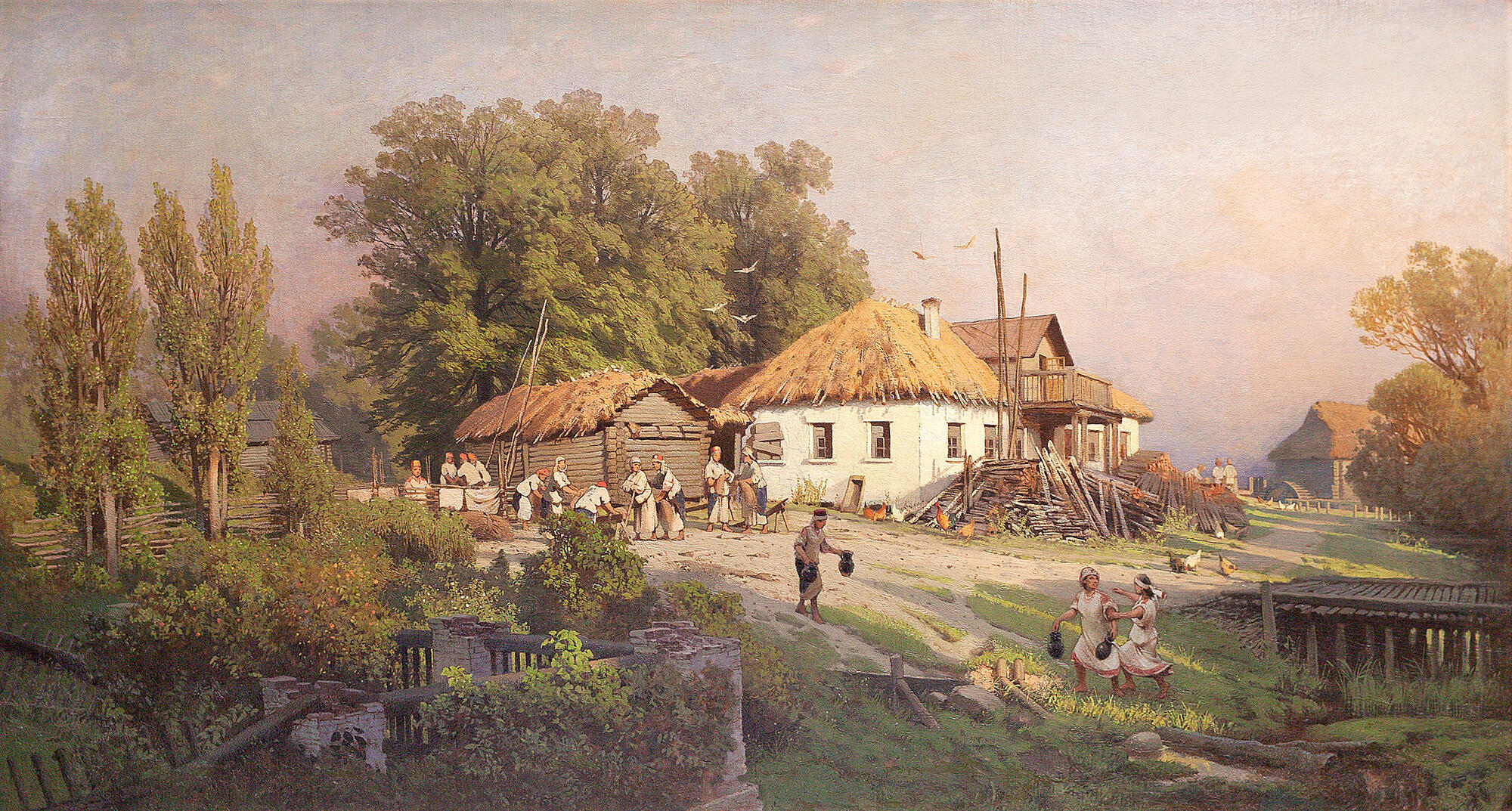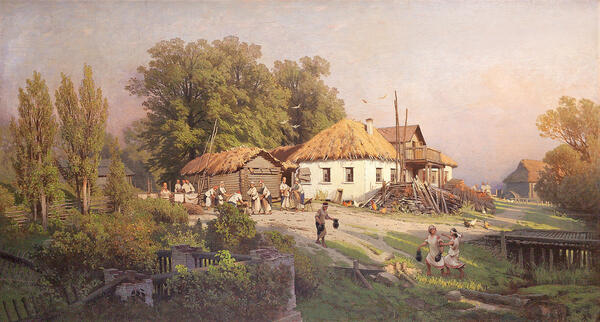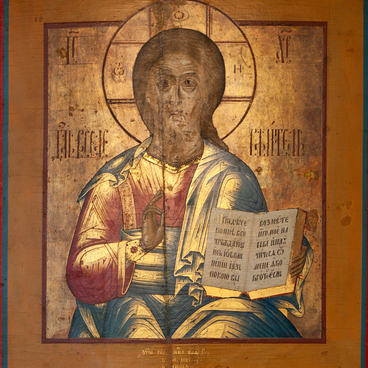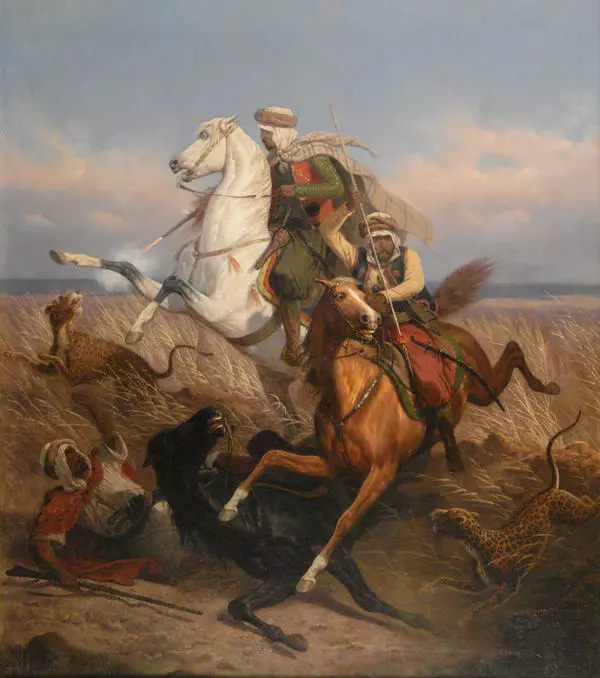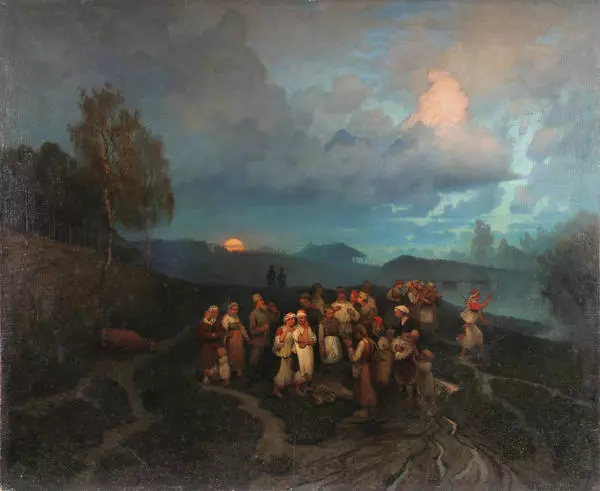Piotr Suhodolsky is a Russian 19th century painter, best known for his landscapes. He graduated from the Imperial Academy of Arts. He studied in the landscape painting class with artist and engraver Socrates Vorobyov and prominent landscape painter Lev Lagorio, Ivan Aivazovsky’s apprentice. In 1864, for his landscape “Noon in the village”, Suhodolsky received a big gold medal from the Academy and the right to receive a pension for 6 years.
As a rule, graduates of the Academy used this award to hone their skills abroad. But Piotr Suhodolsky spent only a year in Europe, and then traveled across Moscow, Kaluga, Tver, Smolensk, Kharkiv, Kursk, Mogilev governorates. In 1868, he entered government service and lost the right to further assistance from the Academy. This job interrupted his connection with the Academy, but he did not stop painting.
A truthful depiction of peasant life, his knowledge of ethnography and a subtle ability to complement the landscape with genre art elements made the village landscape the leading theme in Suhodolsky’s oeuvre.
His harmonious landscapes present the beauty of nature and at the same time the devastation and bustle of the village life. However, the painter found true charm specifically in nature, developing not the most attractive themes. As an academician, Suhodolsky attached particular significance to working with light and shadow, he sought to ‘paint Russian nature’ not by mindlessly repeating someone else’s style, but by developing his own and conveying his ideas and feelings about the village.
Art critic Vladimir Stasov saw the image of a dull Russian village in the artist’s painting ‘Noon in the village’ and deemed it as very important for Russian art: “Finally, we come to the end of all these idyllicisms”.
In 1877, Piotr Suhodolsky returned to St. Petersburg: in his house in the Kaluga governorate, where the artist lived with his family, a fire had happened twice, and it could not be restored. The Academy provided the painter with a workshop in which he worked day and night. Among his admirers were collector and philanthropist Pavel Tretyakov and Alexander III. Piotr Suhodolsky became one of the emperor’s favorite painters and was commissioned personally by Alexander to create battle compositions.
As a rule, graduates of the Academy used this award to hone their skills abroad. But Piotr Suhodolsky spent only a year in Europe, and then traveled across Moscow, Kaluga, Tver, Smolensk, Kharkiv, Kursk, Mogilev governorates. In 1868, he entered government service and lost the right to further assistance from the Academy. This job interrupted his connection with the Academy, but he did not stop painting.
A truthful depiction of peasant life, his knowledge of ethnography and a subtle ability to complement the landscape with genre art elements made the village landscape the leading theme in Suhodolsky’s oeuvre.
His harmonious landscapes present the beauty of nature and at the same time the devastation and bustle of the village life. However, the painter found true charm specifically in nature, developing not the most attractive themes. As an academician, Suhodolsky attached particular significance to working with light and shadow, he sought to ‘paint Russian nature’ not by mindlessly repeating someone else’s style, but by developing his own and conveying his ideas and feelings about the village.
Art critic Vladimir Stasov saw the image of a dull Russian village in the artist’s painting ‘Noon in the village’ and deemed it as very important for Russian art: “Finally, we come to the end of all these idyllicisms”.
In 1877, Piotr Suhodolsky returned to St. Petersburg: in his house in the Kaluga governorate, where the artist lived with his family, a fire had happened twice, and it could not be restored. The Academy provided the painter with a workshop in which he worked day and night. Among his admirers were collector and philanthropist Pavel Tretyakov and Alexander III. Piotr Suhodolsky became one of the emperor’s favorite painters and was commissioned personally by Alexander to create battle compositions.
